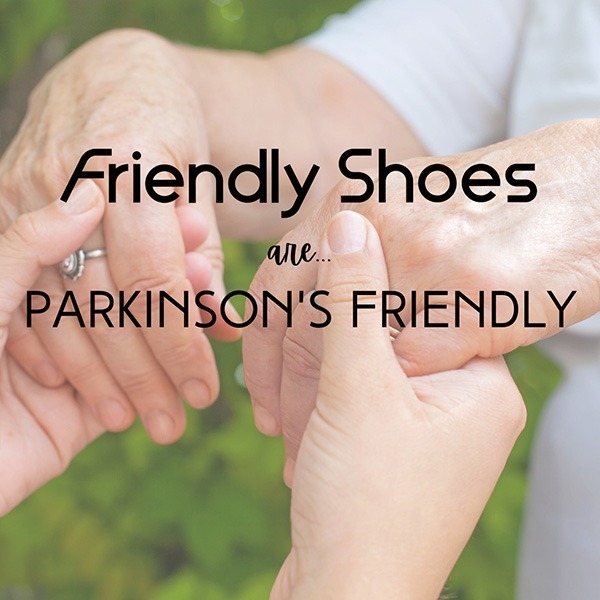Cope with Parkinson’s Disease
Dealing with any kind of illness is tough enough, how much more if it’s during an unprecedented pandemic when any complications can hit you badly? A chronic illness makes you more vulnerable and it can be debilitating. It can make you worry especially if you have a pre-existing condition or worse if you’re Immuno-compromised. How about dealing with neurological disorders, say for example if you have Parkinson’s disease? What would it possibly be like? As an Occupational Therapist, I’ve had a fair share of experiences dealing with patients who are battling this out. Seeing them limp so badly or walk awkwardly can be heartbreaking but it isn’t their fault as the problem lies in their brain cells.
What is Parkinson’s?
According to Vogue Magazine, more than half a million Americans suffer from Parkinson’s, the second most common neurodegenerative disorder after Alzheimer’s. In addition to the slowness of movement, speech problems, and loss of balance that we tend to associate with the disease, it often comes with emotional disorders such as depression and anxiety. “It’s the most complex disease in clinical medicine because it’s not actually one disease,” says Michael S. Okun, MD, National Medical Director of the National Parkinson Foundation and the Administrative Director at the Center for Movement Disorders and Neurorestoration at the University of Florida. It’s a debilitating nervous disorder that often starts with hand tremors. Eventually, it wears away at the motor and non-motor skills until you have trouble walking, talking, and swallowing. Elara Systems on the other hand says, patients with Parkinson’s experience a loss of cells to a region in the brain called Substantia Nigra. This region produces dopamine, a chemical messenger responsible for transmitting signals within the brain. It allows for the coordination of movement. When dopamine levels decrease, it causes abnormal brain activity. leaving patients less able to direct or control their movement. Patients with Parkinson’s show manifestations in slowed movements. I’ve personally witnessed their struggles, and I’ve also seen that the symptoms are erratic. There are times when they can do the normal stuff. But most of the time even the simplest of tasks is impossible such as fixing a cup of coffee nor going to a bathroom to pee. There are good days though when doing a simple workout routine is a breeze. It’s unpredictable and the symptoms simply come and go. This situation gives the patient a high level of stress because just like everybody else, they too want a normal way of life.
What can you do if you acquire it?
Imagine yourself having tremors and that you’re shaking too much, how can you easily come to terms with it when you can never be the same again? When things are out of your control, you have to do something to minimize the damage. It’s never easy because you can easily lose hope. This can lead to helplessness and you’ll feel like you’re in a vacuum and there’s no way out. But you can’t stay in that rut and just mope around forever. You have to fight it and make your life worth living. This leads to anxiety and maybe depression. My goal is to help out as an Occupational Therapist, that is in a Friendly way. To give some sense of normalcy and to improve their way of life. I want to help them improve, regain, and develop the skills needed for day-to-day life and work. Sometimes Parkinson’s can make their legs freeze up when they’re trying to walk.
Based on my first-hand experience, I saw some of my patients having problems with balance and oftentimes it led them to trips and falls. It’s simply because of the postural instability. Taking care of them requires a lot of patience, compassion, and tender loving care. What they’re going through is way serious and heady but that doesn’t mean they can’t have a sense of normalcy. Of course, there are good enough days when they can function just like everybody else. I’m sure if you are experiencing it or taking care of someone who has this, then you can easily understand. Rigorous and constant therapy is needed to prevent the progression of this dreaded disease. Being able to manage it in the best possible way can lead to a better quality of life. Physical activities can help you function such as the old reliable exercise. Exercising can increase your dopamine level and can help you out. Move around often. If you watch TV, walk during commercials. Play some upbeat music if need be and dance to its tune. Moving and stretching your body will improve your condition. These simple things can make you feel really good. Maintaining poor health habits can result in a decline in your condition so you need to exercise regularly and eat healthily to combat it. These can be a daunting task but you have to think of it as baby steps.
When you’re trying to do some exercise, we advise that you have proper support such as orthotic-friendly shoes. There’s a possibility that you might lose your balance so having it will give you the necessary support. It can also align, prevent, and accommodate foot abnormalities. Wearing it can also improve how the foot functions. Adaptive shoes have the necessary cushioning and support to make you more stable. These are comfortable shoes for people dealing with Parkinson’s, it’s not only highly recommended, but it’s also a must to get one for your own protection. Having difficulties with balance can easily lead to trips, slips, and falls and we don’t want you to experience such accidents. The doctors say that there’s no cure but if we will be able to manage it accordingly then a better quality of life is possible.
Are rigorous tasks possible?
There are reports that some patients with Parkinson’s have even tried climbing a mountain. You might be scratching your heads while thinking what the heck. How can a person with Parkinson’s symptoms of poor balance accomplish such a feat? Walking is hard enough, how can they afford to climb? But there were accounts that they were able to do so. According to some reports, the key is one step at a time using trekking poles. These poles take some time to master, but it’s worth the effort to learn to optimize their benefits. Trekking poles encourage big and coordinated movements. They require the use of both arms, forcing one side of your body to work when it would prefer to be sitting on the sidelines. Your arms and legs work as a team, and each member must participate. Trekking poles can also improve your posture. In doing so, you need to be patient, start small, and try the best you can to do it. I’ve seen patients firsthand who were able to overcome the difficulties and they’ve become happier. Nothing is impossible. If you focus and try to help yourself, it will boost your chance to achieve the quality of life you desire.







